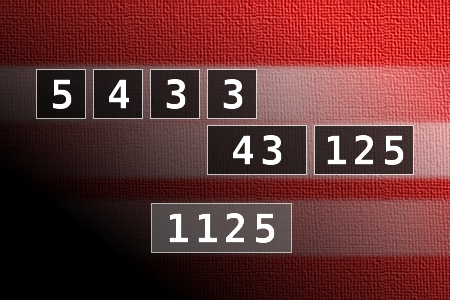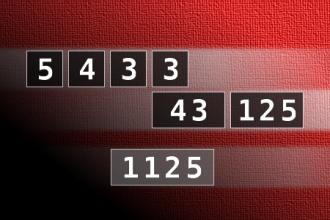Calculate the number 1125
NUMBERMANIA: Calculate the number 1125 using numbers [5, 4, 3, 3, 43, 125] and basic arithmetic operations (+, -, *, /). Each of the numbers can be used only once.Correct answers: 14
The first user who solved this task is Nasrin 24 T.
#brainteasers #math #numbermania


